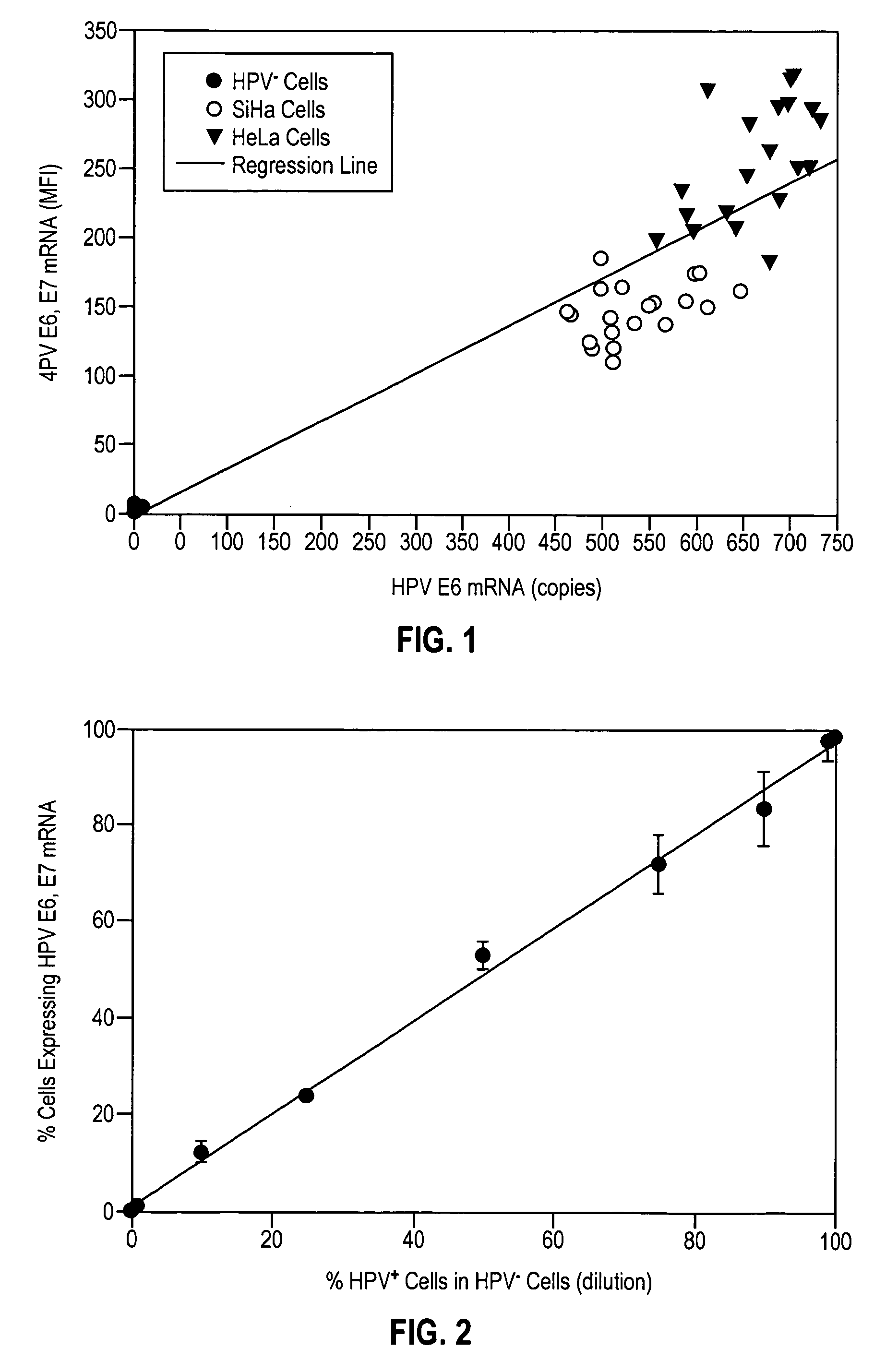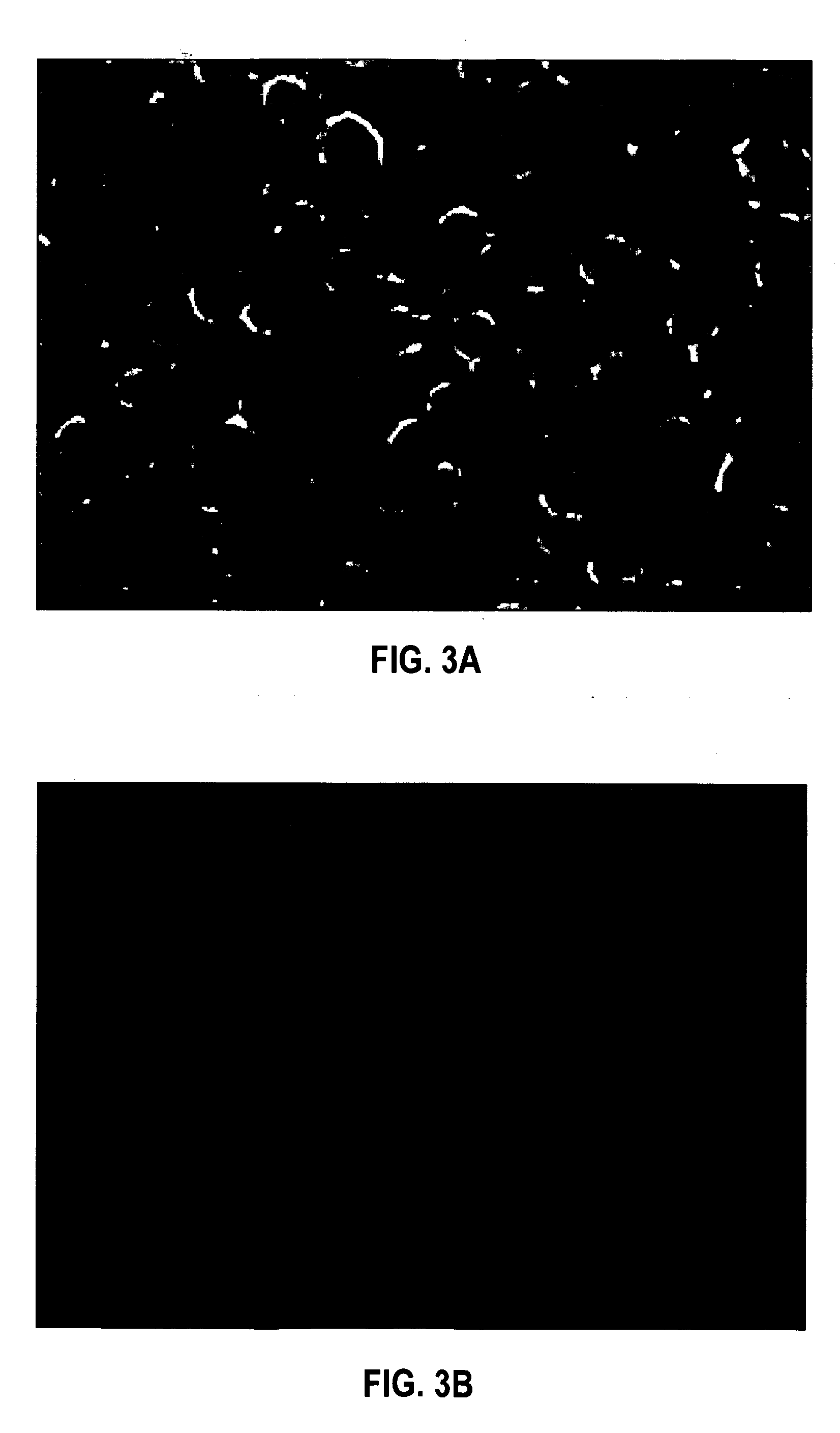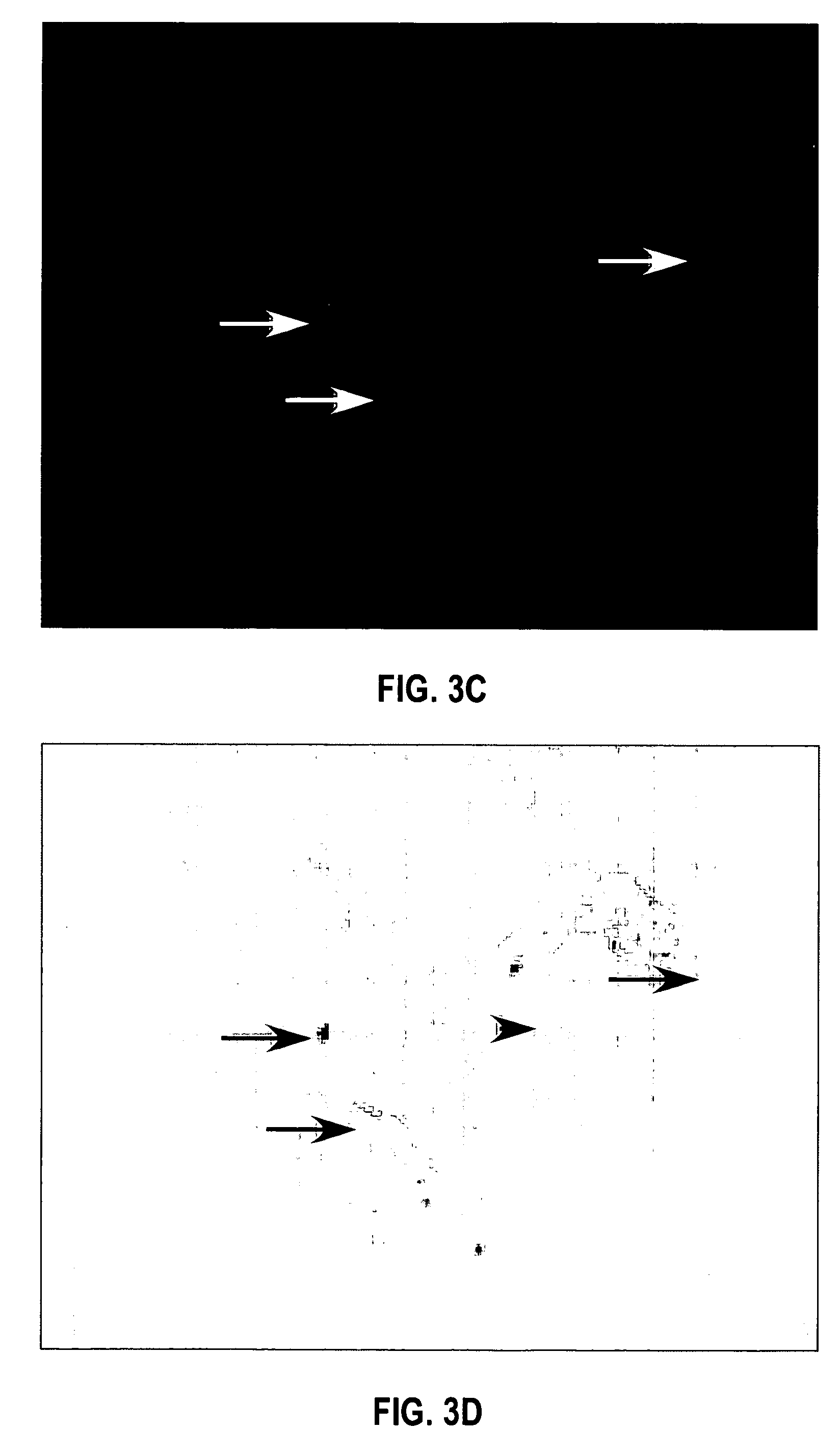HPV E6, E7 mRNA assay and methods of use thereof
a technology of mrna assay and assay, which is applied in the field of hpv e6, e7 mrna assay, can solve the problems of pap smear sensitivity of only 58%, ineffective test to distinguish benign lesions from lesions with malignant potential, and pap smear
- Summary
- Abstract
- Description
- Claims
- Application Information
AI Technical Summary
Benefits of technology
Problems solved by technology
Method used
Image
Examples
example 1
Simultaneous Immunofluorescence and Ultrasensitive Fluorescence In Situ Hybridization to Detect HPV E6, E7 (“In Cell HPV Assay”)
[0066] A 1 mL aliquot was removed from the liquid-based cervical cytology specimen isolated from the subjects. The cells were pelleted by centrifugation at 400× g and washed once in phosphate buffered saline (“PBS”), pH 7.4. Cells were resuspended in 100 μL of PBS, pH 7.4 and stained with a 1:10 dilution of phycoerythrin (“PE”)-conjugated anti-CAM 5.2 and PE / cy5-conjugated anti-CD16 (BDPharmingen, San Diego, Calif.). The cells were then incubated at 4° C. for 20 minutes in the dark. Following incubation, the cells were fixed, permeabilized, washed once in PBS, pH 7.4, pelleted by centrifugation at 400×g, washed again in 2×SSC, and pelleted by centrifugation. The cells were then resuspended in a hybridization mix consisting of 5×SSC, 30% formamide, and 100 μg / mL sheared salmon sperm DNA (“ssDNA”) and a cocktail of 5′- and 3′-fluorescein labeled HPV E6, E7 m...
example 2
The Slide-Based In Cell HPV Assay
[0068] 100 μL of cells (1×106 cells / mL) were transferred from the liquid based cervical cytology specimen isolated from the subjects and put into a cytocentrifuge or liquid-based slide system. The slides were centrifuged at 800×g for 2 minutes at room temperature. Following a wash in 1×PBS, pH 7.4, the slides were incubated in 1× PermiFlow (Invirion, Inc., Frankfort, Mich.) fixation / permeabilization reagent in a Coplin jar at room temperature for 1 hour. The slides were then washed once in PBS and once in 2×SSC. The cells were hybridized to a cocktail of the HPV OncoTect probes a hybridization oven at 37° C. for 30-120 minutes. The slides were then washed for 5 minutes in a Coplin jar containing 50 mL pre-heated 2×SSC, 0.1% Triton X-100 and incubated for 15 minutes in a Coplin jar containing 50 mL pre-heated 0.1×SSC, 0.1% Triton X-100. Following a brief rinse in PBS, pH 7.4, the slides were coverslipped using Fluorsave mounting medium (CalBioChem, S...
example 3
Validation of the In Cell HPV Assay
[0069] To validate the effectiveness of the In Cell HPV Assay, commercially available normal ectocervical cells, i.e., HPV− ectocervical cells, and HPV+ SiHa and HeLa cells were grown in culture and split into 20 samples and analyzed for HPV E6, E7 mRNA by the In Cell HPV Assay with flow cytometry and for HPV E6 mRNA by real-time RT-PCR with a detection limit of 10 copies per cell. FIG. 1 shows the relationship between the MFI of HPV E6, E7 mRNA and copies of HPV E6 mRNA in each of the cell populations. Linear regression analysis of the results of FIG. 1 resulted in a correlation of 0.88 with a p value of 0.001. Based upon the results of this experiment, the theoretical sensitivity of the In Cell HPV Assay was calculated to be 10 to 20 copies of HPV E6, E7 mRNA per cell. In all subsequent patient sample analyses, cells were considered positive for HPV E6, E7 mRNA if they exhibited an MFI greater than 200 copies per cell, 200 representing a copy nu...
PUM
| Property | Measurement | Unit |
|---|---|---|
| Fraction | aaaaa | aaaaa |
| Fraction | aaaaa | aaaaa |
| Fraction | aaaaa | aaaaa |
Abstract
Description
Claims
Application Information
 Login to View More
Login to View More - R&D
- Intellectual Property
- Life Sciences
- Materials
- Tech Scout
- Unparalleled Data Quality
- Higher Quality Content
- 60% Fewer Hallucinations
Browse by: Latest US Patents, China's latest patents, Technical Efficacy Thesaurus, Application Domain, Technology Topic, Popular Technical Reports.
© 2025 PatSnap. All rights reserved.Legal|Privacy policy|Modern Slavery Act Transparency Statement|Sitemap|About US| Contact US: help@patsnap.com



